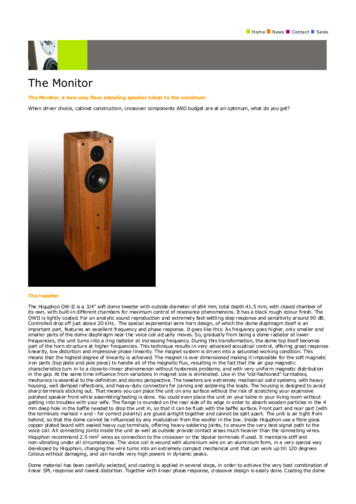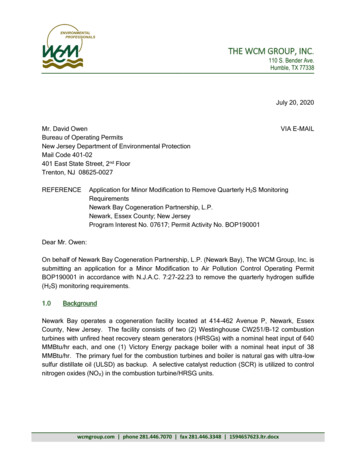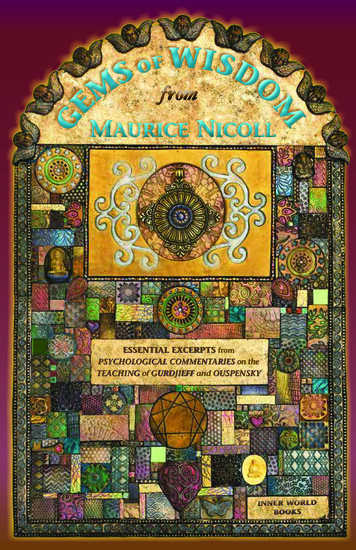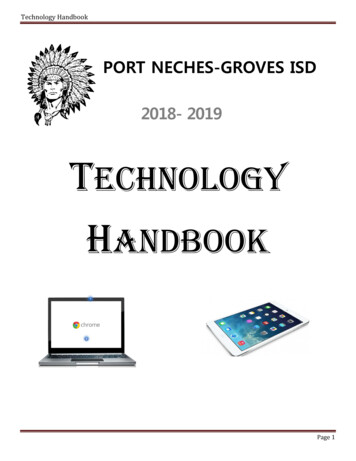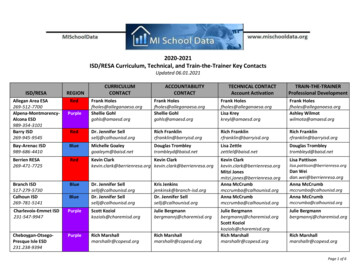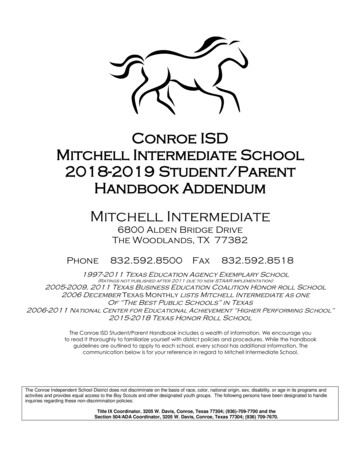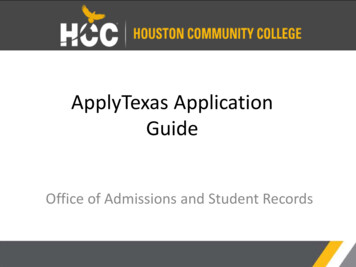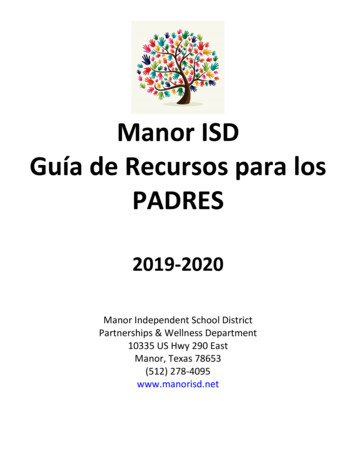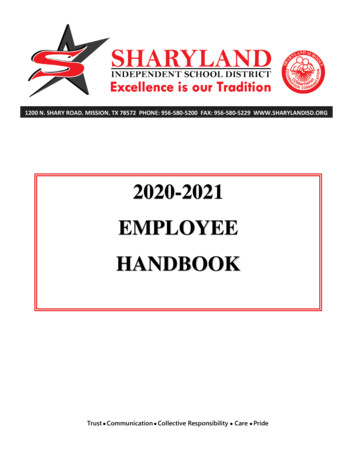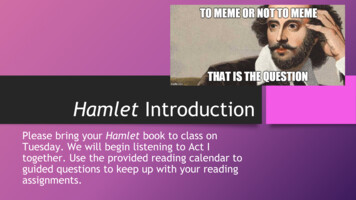
Transcription
Hamlet IntroductionPlease bring your Hamlet book to class onTuesday. We will begin listening to Act Itogether. Use the provided reading calendar toguided questions to keep up with your readingassignments.
Hamlet Schedule Fall 2018: English IV APAs you read, use the attached guided reading questions to help you annotate. Additionally, for each Act that weread, you should write 2 original questions (these could be things you aren’t understanding or more Socraticquestions you want to pose to the class). Your questions are what will be the starting point of our class discussions.Tuesday, October 16: Begin listening to Act 1 together in class. HW: Finish Act I by block day, Oct 17/18Weekend of October 19: Read Act II by Monday, Oct 22Monday, October 22: Read Act III by Block Day, Oct 24/25Weekend of October 26: Read Act IV by Monday, October 29Monday, October 29: Act I-III Quiz (2F) HW: Finish Hamlet by October 30Block Day, November 7/8: Hamlet Test (Objective and Writing)
Important TermsMachiavellian – characterized by unscrupulous or immoralcunning, deception, or dishonesty (remember medea)Existentialism – analysis of individual existence in anunfathomable universe and the plight of each individual; manassumes ultimately responsibility for actions of free will; nocertain knowledge of what is right or wrongNihilism – the rejection of traditional values and beliefs/religions,often in the belief that life is meaningless; man’s existence issenseless and uselessMetadrama/metatheatre – aspects of plays that draw attention toits nature as a drama, especially through the use of soliloquies,asides, prologues, epilogues, and references to acting
Important Terms Aside: When a character addresses the audience or another character on stagein a manner that presumes the other characters cannot hear him. Monologue: A long dramatic speech directed at other characters in the play. Soliloquy: A speech given by a character alone on stage, meant to reflect thecharacter’s innermost thoughts and struggles. Hamlet will give SEVEN soliloquies in this play. They are crucial intracking the conflicts, themes, and character development of Hamlet. Blank verse vs prose: blank verse are lines written in unrhymed iambicpentameter whereas prose is meant to mimic the more natural flow of speech. Shakespeare uses this to distinguish class as well as an indicator of Hamlet’smental state throughout the play.
Background of the Play Written in 1600 or 1601 and first performed in 1602 The origin of Hamlet comes from a Scandanavian tale called Amleth or Amlóði(which means "mad" or "not sane" in Old Norse) was put into writing around1200 AD Thematic influences come from both the Renaissance and the Restoration: The 15th-century Renaissance brought with it a new interest in the study of human experienceand awareness. Scholars and artists purported that the human understanding of the world wasbased on appearance, and that it was only with great difficulty (if at all) that humans could seebeyond these appearances in order to see the “real.” The main action of Hamlet takes place in Denmark, a largely Protestant nation at the time of theplay’s composition. Protestants broke with a number of Catholic teachings, including theexistence of purgatory, in the Protestant Reformation. This may explain why Hamlet is hesitant toaccept the ghost’s claims that he is tormented until his life’s crimes are “purged” away.
The Revenge Genre HAMLET is a story driven upon the need to revenge a murder in afamily. In a typical revenge plot, there are no authorities to appealto, either because the original criminal is too power (i.e. hasbecome king) or those in position to act do not know about orbelieve in the criminality of the villain. In a revenge plot, the avenger assumes responsibility early andspends much of the story overcoming various obstacles beforecarrying out his/her mission.
Motifs and ConflictsLook for the following motifs and conflicts. These will beimportant in discovering the themes of the play. “PLAY” – ACTING SPYING DECAY/CORRUPTION MADNESS APPEARANCE VS REALITY ACTION VS INACTION
Characters Setting: Elsinore Castle in Denmark Hamlet: Prince of Denmark, currently home from his studies at Wittenberg for hisfather’s funeral and mother’s marriage. Gertrude: Queen of Denmark, Hamlet’s mother Claudius: New King of Denmark after the death of his brother, Hamlet’s uncle andstep-father Polonius: Lord Chamberlain of Claudius’ court, Claudius’ right hand man when itcomes to spying and mischief, father of Ophelia and Laertes Horatio: Hamlet’s closest friend Laertes: Polonius’ son, quick to action foil for Hamlet Ophelia: Polonius’ daughter, Hamlet’s love interest The Ghost: the spectre of Hamlet’s dead father
Act I SoliloquiesAct I scene ii: How do we see Hamlet breaking away fromElizabethan religious values and reflecting on the more modernconcepts of nihilism or existentialism?What images of decay and corruption are presented?Mythological allusions and analogies - what various comparisonsare made? Why?Who does Hamlet ultimately seem angry with?
Act I scene iv: What reservations to Hamlet and Horatio expressabout meeting the ghost?Before the soliloquy what important information is directlyrevealed and implied by The Ghost?What aspects of Hamlet’s character have shifted and what hasremained the same in the soliloquy?Marcellus: “Something is rotten in the state of Denmark”
Other key points to Act I- Meeting Polonius, Laertes, and Ophelia - Whatcontrasting advice is given to Ophelia from Laertesand Polonius. How is Polonius’ interaction withLaertes different from his interaction with Ophelia.Aphorism: “To thine own self be true” - how is thiscontributing to concepts seen thus far in the play?
ACT II QuestionsWhat are YOUR questions on Act II?
SPYING/PLOTTING MOTIF: What are the 2 spying plots? DECAY MOTIF: Hamlet’s conversation with Rosencrantz andGuildenstern HAMLET’S MADNESS? Notice how his conversation withPolonius and R&G are in prose. THE FUNCTION OF THE PYRRHUS STORY HAMLET’S 3rd SOLILOQUY - What are his primary emotionsnow? What aspect of his character does he reflect on?
Hamlet - Act I and II AP Reading Quiz (F)You have 25 minutes to complete the three sections ofclose-read AP style questions. Turn it in when you aredone.
Writing PracticeHow would we address this prompt with what we have read so far? On Block Day,you will complete a 40 minute timed writing (not this prompt) based on Acts 1-3for a quiz grade. Remember there is a writing portion on your test, so we need topractice!Choose a distinguished novel or play in which some of the most significantevents are mental or psychological; for example, awakenings, discoveries,changes in consciousness. In a well-organized essay, describe how the authormanages to give these internal events the sense of excitement, suspense, andclimax usually associated with external action. Do not merely summarize theplot.
Act III AnalysisHamlet’s 4th soliloquy,interaction with Ophelia, and Ophelia’sreflection on Hamlet’s character?The outcome of Hamlet’s spying on Claudius at the play?Claudius’ soliloquy - How does this solidify his Machiavelliannature?Hamlet’s 5th soliloquy - Are we witnessing a character shift inHamlet?Poor Polonius!And why can’t Gertrude see The Ghost?!?
Act I-III Open-Ended Response (40 Minutes Quiz Grade)Many works of literature contain a character who intentionally deceives others.The character’s dishonesty may be intended either to help or to hurt. Such acharacter, for example, may choose to mislead others for personal safety, tospare someone’s feelings, or to carry out a crime.Choose a novel or play in which a character deceives others. Then in a wellwritten essay analyze the motives of that character’s deception and discuss howthe deception contributes to the meaning of the work as a whole.
Act 1-3 Quiz - Find your scantron
Gertrude?Re-read Act III scene iv (starting on line 30 – end) and ActIV scene i.With these scenes what do you make of Gertrude’s character? Do youfind her to be innocent in all of Claudius’s scheming? How might herinability to see the ghost be indicative of something with her character?
Ophelia’s Madness and the Decay MotifRosemary for remembrance – Gives to LaertesPansies for thought – Gives to Laertes. Think about the connection between thoughtand remembranceFennel (It wilts quickly after being picked) and columbine for foolishness, adultery –Gives to ClaudiusRue for adultery and eternal suffering (Thought to cause abortions in its day) – Gives toGertrude: “There’s rue for you, and there’s some for me.”Daisies for innocenceViolets for faithfulness and fidelity
Madness: Perception vs RealityOften in Hamlet a character’s interpretation of Hamlet’s or Ophelia’s madness is based on his/herown character motivations. Examine each character’s interpretation of Hamlet’s and Ophelia’sbehavior and consider what that may reveal about the other character. Use text evidence tosupport your claims. Something like this may be helpful Perception of Madness What WE know:N/AN/AN/A
Hamlet’s foils and his 7th soliloquyWhich TWO characters function as foils for Hamlet? How does revengemotivate these foils and how do these characters behave differentlyfrom Hamlet? How does this opposition further characterize Hamlet andcontribute to the action vs inaction motif? Find multiple pieces of textevidence to support your claim.
Hamlet’s Changing Perception of Death?How does Act V show a shift inHamlet’s perception of death?
Hamlet’s FoilsLet’s consider these three possible foil pairs:HoratioLaertesFortinbrasDo you think there is any rhyme or reason to the fate of these 3 characters basedon their similarities/differences to Hamlet?
Machiavellian Politics in ElsinoreClaudiusPoloniusHamlet - How does Hamlet’s moral ambiguity make hisMachiavellian nature more complicated? Does Hamlet maintain amoral justification for his actions in the latter half of the play?How might the ending of the play offer commentary on theoutcome of these types of behaviors?
Turning Topics into ThemesThemes:Make a comment on human nature- What image of human nature emerges “PLAY” – ACTINGfrom the work? Are people generally goodor deeply flawed? SPYINGThe nature of society DECAY/CORRUPTION- Does the author portray a particularsociety or social scheme as life-enhancing MADNESSor life-destroying? APPEARANCE VS REALITY Ethics- What are the moral conflicts in the work? ACTION VS INACTIONAre they clear cut or ambiguous? To whatextent are characters to blame for theiractions?
Final Hamlet DiscussionsUse these more philosophical questions to wrap up yourdiscussion of Hamlet. Use the play as the starting part ofyour conversations, but you may also consider therelevancy of these issues/questions today. (That’s whywe have themes because they withstand the test oftime!)
Having a clear goal and the ambition toachieve it at all costs is honorable.
Power eventually corrupts thepeople who have it.
A person must first confront deathbefore fully understanding life’smeaning.
Deceit is never morally justifiable.
One must make a stand againstinjustice even if the cost is personal.
Vengeance or vigilantism is anacceptable means of correctinginjustice.
Moral courage is more difficult toaccomplish than physical courage.
A person’s immoral choice cancome back to haunt them.
Polonius: Lord Chamberlain of Claudius’ court, Claudius’ right hand man when it comes to spying and mischief, father of Ophelia and Laertes Horatio: Hamlet’s closest friend Laertes: Polonius’ son, quick to action foil for Hamlet Ophelia: Polonius’ daughter, Hamlet’s love interest The Ghost: the spectre of Hamlet’s dead father. Act I Soliloquies Act I scene ii .

